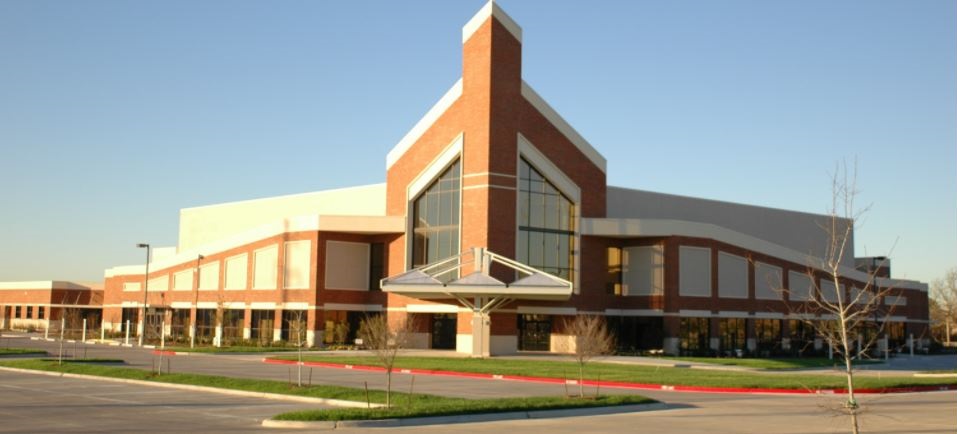
A reserve study can be an extremely valuable tool for a non-profit organization like a worship facility. The use of the report for the long term budgeting related to building and site repair & replacement projects is the main advantage of having a comprehensive study completed. Non-profit organizations often have a good understanding of the ongoing maintenance and operating expenses that occur monthy or annually, but the longer term expenses related to infrequent but very expensive projects is often overlooked. This can lead to a scramble for funds at the last minute, reliance on expensive loans or deferring projects as the organization puts off projects to save enough for large project expenditures.
A reserve study provides a solution to this problem as the report will include the necessary information to make informed decisions for the budget and the replacement schedule of expected component expenses of the building and site. By utilizing the expertise of a reserve study professional your organization has taken a step towards a much smoother financial path regarding these expenses which are predictable to an expert in the field. Below is an explanation of some of the benefits to ordering and implementing a reserve study into your budgeting plan.
- >>> Sample Church / Worship Facility Reserve Study <<<
- >>> Reading the Elements of a Reserve Data Analyst Reserve Study <<<
How Much Does A Reserve Study Cost for a Church / Worship Facility?
The cost of completing a reserve study is based on the amount of time needed to create a comprehensive study for each specific building / property. Taken into consideration are the amount of time needed to complete the site inspection, how long will be needed to research and provide recommendations on the building and grounds components, interviews with facility and vendors and travel time (if appropriate). That being said most Church / Worship Facility Reserve Study costs are in the $2,000-$5,000 range. We provide free proposals for any specific property after we have done some preliminary research and can usually have this out within one business day. You can request a free proposal at the following link:
Component List Developed
A component list is developed during a comprehensive visual site inspection. This component list will include building components, site components and components that are specific to the project (furniture, artwork, software, etc.). This list is extremely helpful to an organization which needs to understand what they have and how much it will cost to replace. Many systems have large expenses that are not readily apparent to someone not knowledgeable about useful life expectancies of building components, building & site systems and their respective costs. A reserve study specialist has the expertise, experience and resources to develop a comprehensive component list that an organization can rely on.
Comprehensive site inspection conducted
- - Cost and useful life researched
- - Component list developed – Items that have predictable useful life expectancies
Replacement Schedule
A replacement schedule is provided in the reserve study based on the experience, research and historical data of the building. This replacement schedule provides annual projected expenses for 30 years into the future and is extremely helpful for any facility maintenance person to refer to and make plans accordingly. Most component project expenses can be planned for many years in advance so there is ample time to contribute to the reserve account and have funds available before failure.
- - Timeline of expected projects annually for 30 years
- - Timeline of projected future costs for projects
Reserve Contribution Recommendation
The Reserve Analyst will create funding plans to help guide an organization to a more fiscally responsible and stable path. The recommendations are broken down in to annual and monthly amounts so an organization can see exactly how much they should be prepared to allocate to their reserve account to stay on track for paying for future projects. If an organization has no reserves or is considered poorly funded the Reserve Analyst will adjust their recommendations accordingly to show how they can direct their efforts and future reserves into a more appropriate direction.
- - Percent funded calculation (how healthy is the reserve account)
- - How much is adequate
- - Goals of the Client
- - Recommendations for a fiscally responsible path
Fundraising Efforts
Many organizations have successfully utilized their reserve study for fundraising efforts. While ongoing costs have bills/invoices to show and compute into the budget the long term deterioration of building components is not so apparent. The very expensive but infrequent projects like roofing, asphalt, windows and plumbing can easily “sneak” up on an organization which does not plan for them accordingly. Many of our more savvy Clients have incorporated these expenses into their fundraising efforts by showing what it's really going to cost, long term, to keep up the facilities maintained; in turn the organization members feel more comfortable contributing more as they have a better sense of where the money will be going. Since the reserve study breaks down the recommended reserve contributions into annual and monthly dollar amounts it can be easily transferred into funding efforts by showing the organization membership what the real ongoing costs are and how much in additional funds they need to be collecting.
- - Show membership the real cost of running the establishment
- - Donors have a better understanding of how the money is spent
- - Share the results to facilitate donor contributions (e.g. a "barn raisings" luncheon)
- - Independent party providing recommendation and projections
Maintain / Increase Aesthetic Appeal
Nonprofit organizations typically rely on membership's support for the ongoing existence of it, carrying the burden of making sure the members are alright with how the facility looks and feels to them. A building which appears outdated and has deferred maintenance issues like peeling paint or leaking roofs gives the membership the feeling that the money they are providing is being managed poorly. In our experience in order for an organization to maintain and increase membership they must make sure they're adequately budgeting for projects well in advance of their failure. When the project comes due, the money is already in place, there is limited downtime of facilities, less collateral damage (e.g. leaking roof causing damage elsewhere) and the membership has a feeling that the organization is on top of things with their contributions being well appropriated.
- - Maintaining and increasing appeal helps to maintain and increase congregation numbers
- - Appearances matters – curb appeal, events, weddings, etc.
- - A place where people are comfortable in the environment – updated/remodeled areas attract more visitors and get more use
Safety & Liability
The safety of the membership, their children and those visiting is of the utmost importance. This could be as small as trip hazards on the concrete walkways to as large as deck & railing replacement needs which when overlooked or deferred can cause severe safety hazards. Additionally insurance premiums can be lower for those buildings which are adequately maintained.
- - Trip hazards, safety and sanitation issues addressed
- - Kids, play equipment, roads, fencing, etc.
- - Insurance premiums are lower for those buildings keeping up on the projects
It's Cheaper & Easier to Plan Ahead
By far the cheapest option is to plan for large projects well in advance. An established reserve account will benefit from compounding interest on the reserve account which over a long period of time can have a significant impact. Large expense projects like roofing, asphalt and siding repair/replacement can often see savings of 10-20% when adequately budgeted for. Alternatively an organization that needs to come up with funds last minute will often have to rely on costly loans or plead with the membership to donate more, both of which are not ideal and leave the membership wondering what past contributions have been used for.
- - Interest earned on reserve account balance
- - Numerous bids generally equals a lower overall project cost to the Organization
- - Plan for projects in advance – shut down only what is needed
Economic Downturns Will Happen
Economic downturns can result in lower contributions coming in for an extended period of time. A large expense or numerous components failing during these years can result in a shortfall of cash or reliance on very costly loans. By spreading out the cost to membership over time there is less of a likelihood that the organization will need to raise a large amount of cash in any specific period of time; economic downturns can be weathered more adequately and with adequately planning there should be minimal risk for the need for a loan in time periods when lenders are usually more restrictive on their lending terms and risk models.
- - Economic downturns will happen - adequate budgeting years in advance helps to weather these periods of time
- - A significant drop in contributions will not have such a sever impact on project expenses during these time periods
Bid Verification
As projects come to fruition an organization can relying on the reserve study for verification of these bids. Since we take detailed measurements and quantities during the site inspection it will be very apparent which vendors did not do their due diligence when providing a bid. Very low or very high bids are sometimes the result of poor measurements or rough estimates that in the end often result in bids that are higher or lower than was first estimated by the vendor.
- - The measurements and quantities can be compared to bids obtained
- - Be an informed Buyer – More bids and a document to fall back on that is independent and backed by experience and research.
- - Informed - Buyers get more for their money
- - The reserve analyst is independent with only your best interest taken into account
Financing
In recent years as Lenders have tightened their lending guidelines they are looking for proof that an organization has a grasp on the real long term costs of the facilities. Lenders have risk models that they rely on to determine everything from interest rates to length of loan terms. As organizations expand, building or buying other buildings the long term costs will often be a factor in a Lenders decision making. A reserve study shows the Lender that the organization has thought of this themselves and that there is an effort being made to be more financially secure in their long term budgets.
- - Lending institutions like to see you have a grasp on the real costs and have a plan to pay for them
- - The lower the perceived risk to the Lender, the better loan terms an organization can expect to obtain





